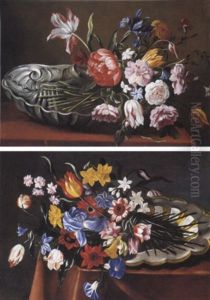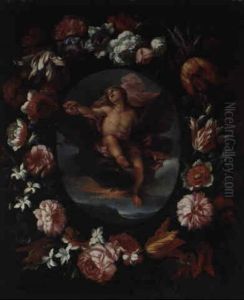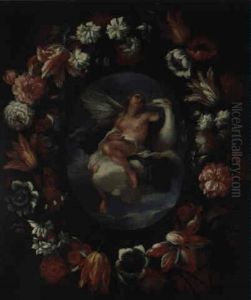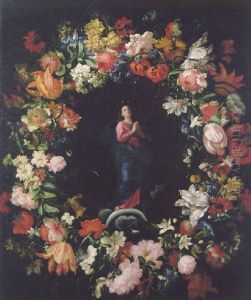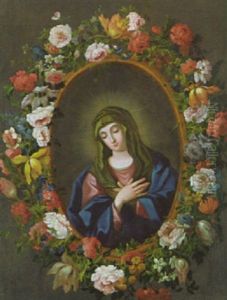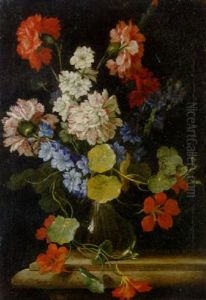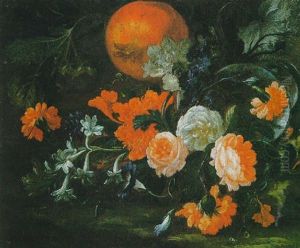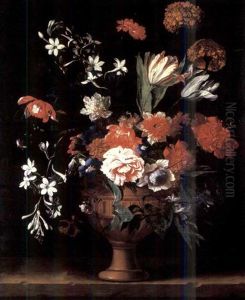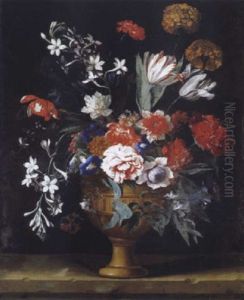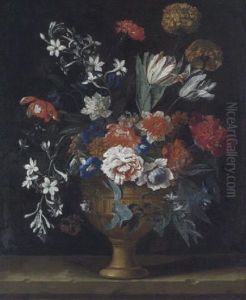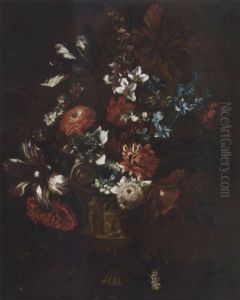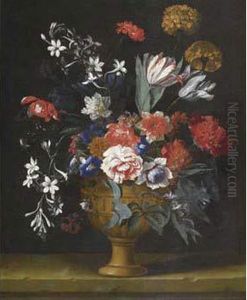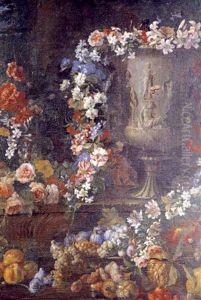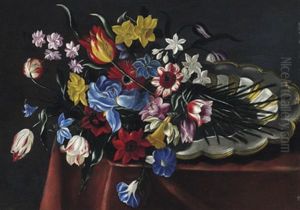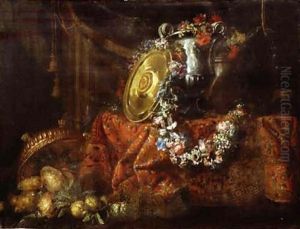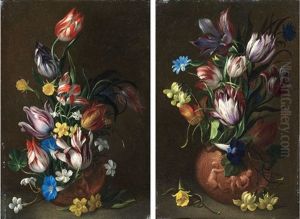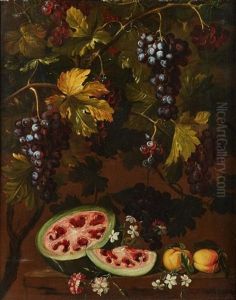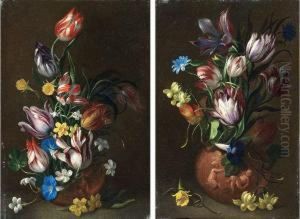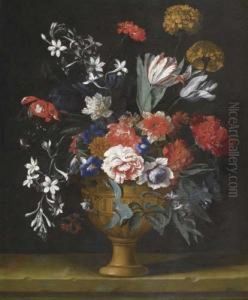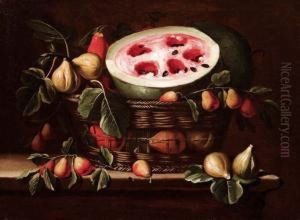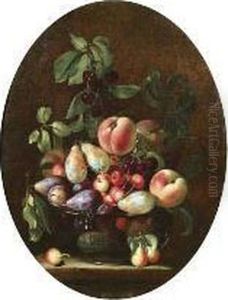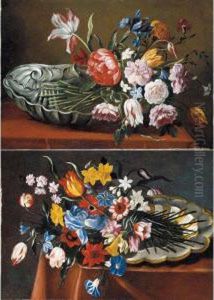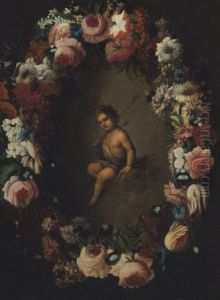Niccolo Stanchi Paintings
Niccolò Stanchi was an Italian painter of the Baroque period, born in 1626 in Genoa, Italy. He was part of a family of artists; his father Giovanni Battista Stanchi and his brothers Ercole and Antonio were also painters. The Stanchi family originally hailed from Genoa but moved to Rome, where they became active in the art community. Niccolò is particularly known for his still-life paintings, which often featured flowers and fruits, a genre that was gaining considerable popularity during the 17th century.
Stanchi’s work was characterized by its vivid colors, attention to detail, and the harmonious arrangement of his subjects. His compositions often included a variety of objects such as vases, baskets, and tables, which were used to display an abundance of fruits and flowers. These still-life paintings not only demonstrated his skill in rendering textures and surfaces but also often contained symbolic or allegorical meanings, which were common in still-life painting of the time.
Although not as famous as some of his contemporaries, Stanchi contributed to the development of the still-life genre in Italy. His works were collected by local patrons and were influential in the Roman art scene during his lifetime. Unfortunately, details about his personal life and training are somewhat scarce, and much of what is known about him is derived from his surviving artworks and the few historical records that mention him.
Niccolò Stanchi's death is recorded as having occurred in 1690. His legacy lives on through his still-life paintings, which continue to be studied and appreciated for their beauty and historical significance in the context of Baroque art. Stanchi's work is part of the narrative of still-life painting's evolution in Europe and serves as a testament to the rich artistic environment of 17th century Italy.
